
by EM2WL | Dec 18, 2014 | Strength Training, Videos
Which rep range is best for fat loss? Muscle building? General strength?
Weight lifting isn’t just about simply picking any workout on the internet, any DVD off the shelf, or any random dumbbell and doing any amount of reps you prefer. Every rep range performs a purpose, and it’s beneficial to hit them all at some point. The 3-part video series below breaks down the basics of the main three rep ranges of lifting: Strength, Hypertrophy, and Endurance.
Understanding the differences between them all can help you when putting together your own lifting program.
Video 1 discusses the Strength phase.
Strength is typically categorized as lifting as heavy as possible, for anywhere from 1-7 repetitions. Rest periods can be as short as 60 seconds if working opposing muscle groups (chest/back), or as long as 3-5 minutes. The lower the amount of reps, the longer the rest is required to replenish the muscles with the energy needed to hit it hard again at the same intensity level. Rest periods and all out effort are essential during this phase. Shortening the rest periods during true “strength” training phases typically is a sign of not pushing hard enough during the set, which essentially turns the workout into either a hypertrophic or endurance based one (phases discussed in next video).
Video 2 discusses the Hypertrophy and Endurance phases.
Hypertrophy is the phase used for adding size to the muscle. During this phase you are lifting as heavy as possible (meaning you can’t eek out any extra reps), for around 8-12 repetitions. Rest periods are usually 30-60 seconds, depending on if you are supersetting with opposing muscle groups (chest/back). Lower rest times are needed during supersets because one muscle is resting while the other is working.
Endurance is the phase that increases endurance of the smaller muscles, allowing the larger muscles to work at full capacity (without the smaller muscles failing) in the other phases. This phase is very cardiovascular in nature, with rest periods of 30 seconds or less. The higher the amount of reps, the less rest is required, so most circuit and DVD type workouts will fit into this phase category.
Video 3 discusses how the rep ranges come together for each individuals needs (periodization). When focusing on a particular goal, you will likely spend the majority of your time in the rep range that most directly corresponds to the end goal. However, you can still dip into other rep ranges as necessary in order to enhance the benefits of the other phases when you return to them. Try not to view any rep range as completely useless. When it comes to goals like fat loss and muscle building, periodization can be a key attribute in preventing plateaus by essentially sending your body through a faux “newbie gain” phase every time you return to your main rep range. Win, win!
I hope you enjoy this series, fam! Of course, all this info and more is included in our Beginner Strength Training Manual. 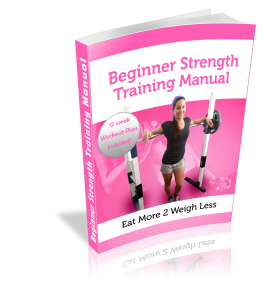
Let me know if this helps you…or if I just made it more confusing. LOL. If you have any other questions, or need more clarification (from this or any other vid/blog), drop me a line below!
~Kiki :)
SUBSCRIBE to our YouTube Channel for weekly info and motivation.

by EM2WL | Dec 2, 2014 | Self Acceptance, The Journey
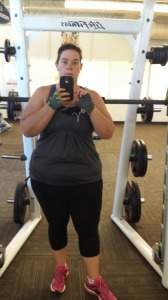 Finally letting go feeling free.
Finally letting go feeling free.
I have been around the EM2WL group for two and a half years now. My journey has been a very long road, filled with dozens of ups and downs, frustrations, anger, tears and joy. It has not been an easy road and I have almost walked away from it a few times..
Almost.
But I knew that wasn’t going to help me. I knew the answer to my eventual success at sustaining fat loss was with EM2WL. I just couldn’t understand why my journey has not been a tremendous success as many of the other stories you read on here. I did everything I was supposed to. I did the metabolism reset, I did the 10% cut, I did TDEE breaks, I worked hard at keeping my diary clean but still enjoying myself. I hit the weights hard, I gave up on most of my cardio activities. Yet, the scale wasn’t budging a single pound. My inches didn’t seem to be changing much either. All I seemed to be doing was spinning my heels, getting frustrated and angry at myself and at those who were helping me and not being able to let go. I was told to ditch the scale. I was told to relax, and focus on something else. I was told to trust the process and believe in Myself.
Two long years of not listening. Two years of spinning wheels, self doubt and hatred, two years of crying almost daily about how nothing was happening and how I was still not seeing any sort of losses.
It was exhausting. It was debilitating. It was not how I wanted to spend the rest of my life, constantly angry and upset over not being a size “Average”, not enjoying myself or my family.
So I finally decided to listen. Really listen. And that meant the first thing I did was throw my scale away.
It took about two weeks to get over the urge to jump on the scale every morning and see if anything was happening. I was finally starting to see that my happiness that day was not decided by what a number on the scale said. Another stressor for me was tracking. I had been tracking my food intake for virtually 15 years with Weight Watchers and with MFP. I needed to let it go and try on my own for a while. I didn’t want to stress over numbers anymore. I wanted to enjoy my life and try to find a healthy balance. It was then that I realized what stress had been doing to me.
 Once I eliminated two major stressors for me, I was starting to see a shift in my head towards this whole process. I was able to finally “trust the process” and really focus on what my end result wanted to be. I wanted fat loss, not a number on a scale. I wanted strength gains in the gym, not to be the gym cardio bunny. I wanted to be able to go out to dinner and not worry about how many calories or fat or carbs was in something. Above all, I was able to start loving myself. I was sleeping again, I was taking time out to do things for myself, I could feel a light in my heart again. Even friends were commenting on how happy I had seemed lately.
Once I eliminated two major stressors for me, I was starting to see a shift in my head towards this whole process. I was able to finally “trust the process” and really focus on what my end result wanted to be. I wanted fat loss, not a number on a scale. I wanted strength gains in the gym, not to be the gym cardio bunny. I wanted to be able to go out to dinner and not worry about how many calories or fat or carbs was in something. Above all, I was able to start loving myself. I was sleeping again, I was taking time out to do things for myself, I could feel a light in my heart again. Even friends were commenting on how happy I had seemed lately.
I had finally let go.
Its been 5 months since I stepped foot on a scale. I have no idea what my weight is, nor do I care. I track sporadically and this of course is still a huge work in progress, but I feel much more comfortable about my eating now than I did three years ago. I’m still working on calorie increases and keeping my macros in check. I’m not perfect, but I’m still learning.
 This past 5 months has been a huge mental shift. And its one that has finally let me see the big picture and not focus on short term issues. I now know the scale is a hindrance to my success. I don’t need that in my life anymore. I have learned to accept who I am and not dwell on what I look like. I may not be anywhere near my end goal right now, but I am finally in the right mindset and the (physical) shifts are finally happening! Not everyone can figure this out right from the start. So if this sounds like you, let me be the one to tell you, Stick with it. Let go of the scale, learn to love yourself for YOU and trust the process.
This past 5 months has been a huge mental shift. And its one that has finally let me see the big picture and not focus on short term issues. I now know the scale is a hindrance to my success. I don’t need that in my life anymore. I have learned to accept who I am and not dwell on what I look like. I may not be anywhere near my end goal right now, but I am finally in the right mindset and the (physical) shifts are finally happening! Not everyone can figure this out right from the start. So if this sounds like you, let me be the one to tell you, Stick with it. Let go of the scale, learn to love yourself for YOU and trust the process.
The time is going to pass anyways, you might as well enjoy it rather than hating it.
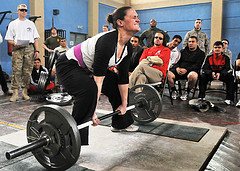
by EM2WL | Nov 4, 2014 | Fitness Cycles (Periodization)
Tips for Increasing Deadlift and Squat Strength
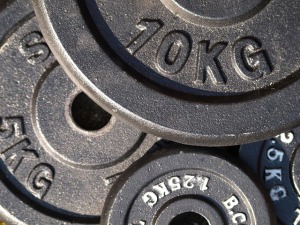 Let’s face it – that beast feeling on a certain lift, or killing a new Personal Record (PR) at the gym just feels good. The first time I was able to bench/squat/deadlift my body weight will always land somewhere in my top 5 all time “beast moments” (right next to hitting double digit pull-ups). For women especially, strength is empowering, and getting stronger is a sense of accomplishment like no other. If you’ve been lifting for a while and are ready to start pushing your maxes to the next level, it’s good to know a few basic tricks of the strength trade. Understanding what could help you to blast through your strength plateaus, will have you adding more plates to the bar, more often.
Let’s face it – that beast feeling on a certain lift, or killing a new Personal Record (PR) at the gym just feels good. The first time I was able to bench/squat/deadlift my body weight will always land somewhere in my top 5 all time “beast moments” (right next to hitting double digit pull-ups). For women especially, strength is empowering, and getting stronger is a sense of accomplishment like no other. If you’ve been lifting for a while and are ready to start pushing your maxes to the next level, it’s good to know a few basic tricks of the strength trade. Understanding what could help you to blast through your strength plateaus, will have you adding more plates to the bar, more often.
Today, let’s look at two basic compound lifts for the lower body – the deadlift and the squat.
Deadlifts:
Grip Strength– One huge component to increasing deadlift numbers is to increase your grip strength. If your back and legs can pull a certain weight but the bar is slipping from your fingers, it’s a no-go. In order to get a stronger grip, try things such as farmer walks and hanging from a pull up bar (arms extended) for as long as possible. The key is that endurance of the smaller muscles is required in order to put up big numbers. So in addition to adding these types of exercises into your routine, be sure to use a periodized rotation that phases in lighter weights/higher reps from time to time, for the sole purpose of building that endurance.
 Grip Positioning– Some people prefer to grip both hands overhand, both hands underhand or a mix of both. It’s important to start with what feels most comfortable and adjust as you become more confident in the lift. If you grip both under and overhand for example, you may find that switching which hand is over and which is under gives you a better and stronger grip. Try all three methods to see which works best for you.
Grip Positioning– Some people prefer to grip both hands overhand, both hands underhand or a mix of both. It’s important to start with what feels most comfortable and adjust as you become more confident in the lift. If you grip both under and overhand for example, you may find that switching which hand is over and which is under gives you a better and stronger grip. Try all three methods to see which works best for you.
Stance Styles– Some people deadlift sumo-style (very wide stance) and others do so conventionally (shoulder width). If you’re struggling with deadlift as you currently do it, change up the stance. You may find you are stronger in one than the other, as often is the case. If you have long arms and a short torso, conventional style is recommended. If your torso is longer and your arms are shorter, try sumo.
Using hooks, straps or other accessories can and should be a last resort for when you are A) an intermediate to advanced lifter, really trying to break a plateau on an all out lift, and/or B) at the end of a workout when your smaller muscles have been fully fatigued — but you need to press on for whatever reason. These tools can be extremely helpful in those scenarios, but can easily cause a dependency in newer lifters who truly should be developing proper grip strength and forearm endurance before attempting to lift very heavy weight. There are always exceptions to the above (such as having carpal tunnel, or other issue that inhibits grip abilities for longer periods of time), but generally most recreational lifters can leave the accessories to vet bodybuilders and powerlifters. Gloves are another accessory that may be of great assistance to one person but a hindrance to another. If gloves help you, it’s perfectly fine to use them throughout your workout. If they seem to be obstructing your lift, try using chalk instead to assist with grip without the bulk.
Squats:
 Increase Flexibility– As beginner lifters we, ironically, tend to skip out on the most fundamental areas of strength training. We place all the emphasis on the actual lift — and not what is surrounding it (warmup, cool-down, stretching) — creating a nasty habit as time progresses. As a result, we get tighter and tighter over time, eventually bringing our results to a screeching halt. If there’s one thing that vet lifters know is that flexibility is the cornerstone of any great lift. You’ll need sufficient flexibility in your ankles and hips in order to squat safely and properly, especially with a good bit of weight. Work on increasing your flexibility in these areas. Try hip flexor stretches, tennis ball rolling on your feet/ankles, knee hugs, and side to side leg swings. Always remember to do a proper warm up and cool down before lifting.
Increase Flexibility– As beginner lifters we, ironically, tend to skip out on the most fundamental areas of strength training. We place all the emphasis on the actual lift — and not what is surrounding it (warmup, cool-down, stretching) — creating a nasty habit as time progresses. As a result, we get tighter and tighter over time, eventually bringing our results to a screeching halt. If there’s one thing that vet lifters know is that flexibility is the cornerstone of any great lift. You’ll need sufficient flexibility in your ankles and hips in order to squat safely and properly, especially with a good bit of weight. Work on increasing your flexibility in these areas. Try hip flexor stretches, tennis ball rolling on your feet/ankles, knee hugs, and side to side leg swings. Always remember to do a proper warm up and cool down before lifting.
Deloading – if you have a problem with flexibility (you’ve hit a plateau, can’t squat past parallel, or feel the lift in your knees), then it’s likely time to deload. Take a break, decrease the load on the bar and work on endurance, flexibility, and form. If you can’t perform a full range-of-motion (ROM) squat without weight, there’s no reason to go loading up the bar again just yet. After some down time, slowly start increasing the weight again, stopping whenever you reach a weight that you does not allow you full ROM. Work through any inflexibility and move on only when you can do the move properly with the intended weight amount. Practicing any lift with only partial ROM will compound the problem. Deloading every 4-10 weeks and placing some much needed focus on flexibility and bodyweight ROM can go a long way in improving your PRs when it’s time to hit it hard again.
Experiment with Grip Width– Some people do better (especially on heavy squats) with a wide grip versus a narrower one. Depending on wrist strength too, some grips work better than others. For example, some people find they have better control of the bar when they are gripping really wide on heavy squats. If your legs can handle the weight but the bar is slipping off your back, what’s the point? Find a grip width that works for you and helps you execute the squat properly and safely.
Compound lifts are all around excellent exercises as they require the engagement of a ton of muscles in order to execute. Our bodies love the benefits of compound lifts. By being able to pull or squat even more weight on these lifts, you’ll be seeing the results in no time. Not only will you be hitting new PR’s, but you’ll be rocking a more tight, lean and strong LOOKING physique, too!
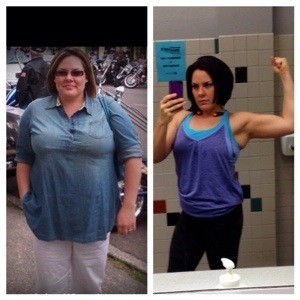
Focusing on strength has taken Cheri mentally and physically to the next level (click for her story!).
Photo cred: Drew Stephens, Isafmedia, photostock
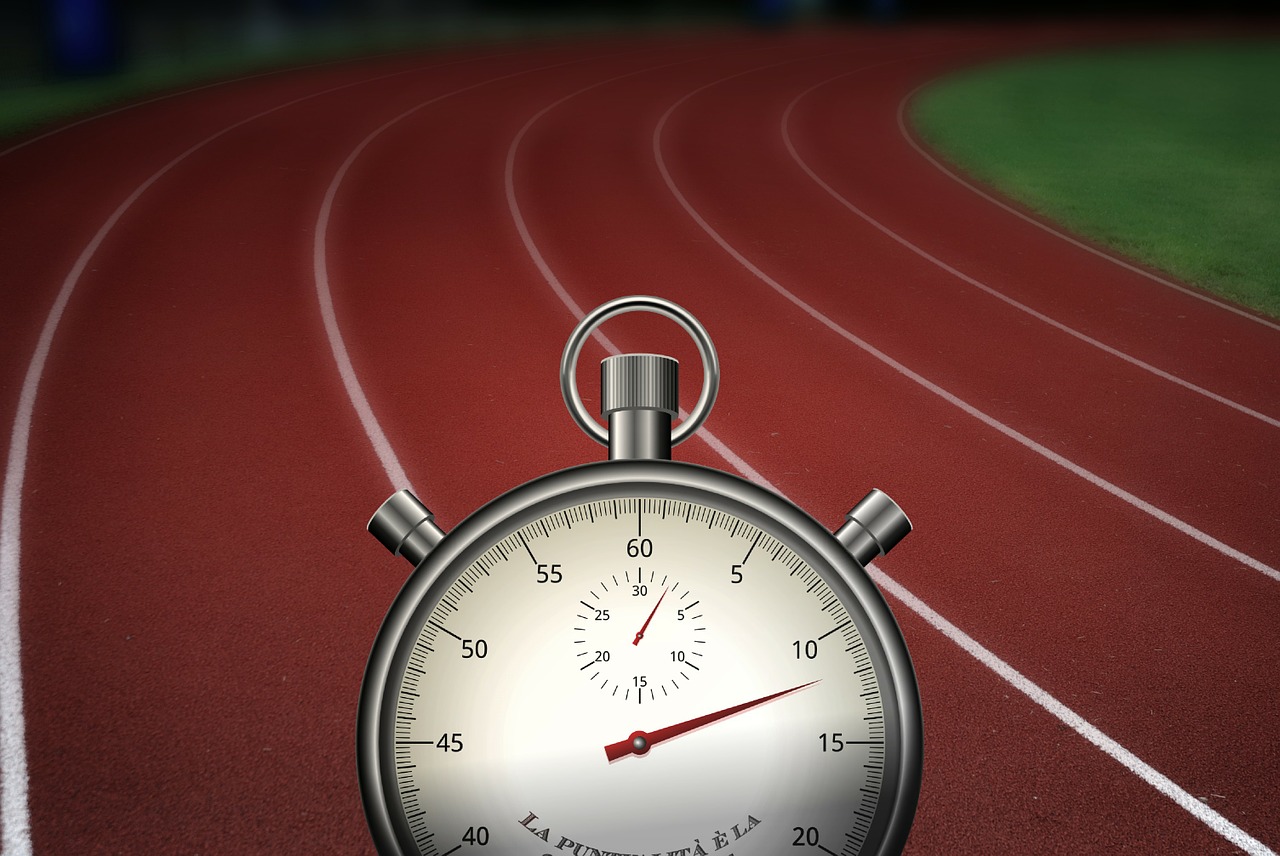
by EM2WL | Oct 9, 2014 | Cardio, Fat Loss / Cutting
How to Maximize Gym Time
Let’s face it, life is busy. Whether we’re single, married, have ten kids, have no kids, in school, working, you name it- we’re always racing the clock! Although our schedules are hectic, many of us realize the importance of finding time in our day to squeeze in some exercise. When working with a limited slot of time, we want to find ways to optimize that part of our day so we can be efficient, work hard, and get results. There are certain things that we can do to maximize our gym time and get more bang for our buck.
Have a Plan
 Unless this is your first time ever reading this blog or hearing from me, you know that my biggest pet-peeve (and with good reason!) is to see (or even HEAR) about people wandering aimlessly about life – well, at least the fitness side of it – with no plan. Ack! I mean, unless you are completely new to working out, or testing out gym equipment is your hobby, get a plan – and work that baby. Not only is following some sort of plan best for maximizing gym time, but it’s best for maximizing RESULTS! In other words, if you want to workout with purpose, having a plan is non-negotiable.
Unless this is your first time ever reading this blog or hearing from me, you know that my biggest pet-peeve (and with good reason!) is to see (or even HEAR) about people wandering aimlessly about life – well, at least the fitness side of it – with no plan. Ack! I mean, unless you are completely new to working out, or testing out gym equipment is your hobby, get a plan – and work that baby. Not only is following some sort of plan best for maximizing gym time, but it’s best for maximizing RESULTS! In other words, if you want to workout with purpose, having a plan is non-negotiable.
Random workouts – especially once you move past the newbie gain phase – often equal random results. You may ultimately desire to move to a more intuitive style of workouts, but when time is of the essence and you’re not quite familiar with how certain things fit – just stick to the plan.
Trust me, I’ve been there, and I know how easy it is to get sucked into the “atmosphere” and completely lose 2 hours of your day before feeling like you’ve done enough to warrant leaving. I also know that amount of time is completely unnecessary, and is typically a contributing factor to why many of us will totally scrap our workout if we’re running short on time. If you have a plan (preferably created by a professional, unless you are familiar with periodization and putting together effective workout combos) you have an accurate measure of how “done” you are at any given time increments. Let your trainer know that you are time crunched, or search out specifically, workout plans that fit with your goals and available time slots. Don’t follow some random 6-day, 1hour/day, workout split if you only have time to hit the gym 3 days/wk for 30-45 min, tops.
Have a Plan B
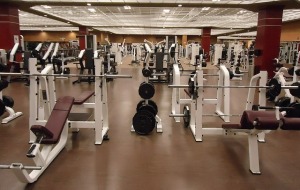
Your gym not this big OR empty? Have a Plan B!
This is where the OCD-plan-follower can relax a bit, and the ADD exerciser can rejoice. Yes, an overall, solid, plan is first and foremost, but remind yourself that it’s OK (and often necessary) to be flexible. Why? Because there will be a time that you get to the gym, totally pumped to hit the squat rack. You’ll head in, struttin your stuff with your Converses and new beasty, striped knee-high socks, and bam – all squat racks taken. Argh! This happens a lot in busier gyms during peak times. Don’t rely on one particular piece of equipment for your exercises. Have an idea of what you want to do, but don’t be married to it.
For instance: If it’s leg day – and you’re scheduled to do squats – you’re good no matter what, because you have a backup plan. Full squat racks aren’t stopping you, it’s off to the hack squat machine or an empty area to do squats with dumbbells. Bench day and no rack available? Head for the Smith machine (add extra weight to make up the bar weight difference), or take a set of dumbbells or even the straight curl bar (many gyms have up to 120 lbs) over to the free weight adjustable bench area.
Now this does NOT mean that you should take a professionally written program and chop it up by doing your own take on EVERY move, but you should know how to if you ever truly needed. Take the time on a less busy/off day to get to know alternate pieces of equipment that can generally get the job done (or ask your trainer if you’re working a plan they’ve given you). Often there are pieces of equipment that look completely different, yet perform similar functions (like the seated vs lying leg curl machines)
Superset
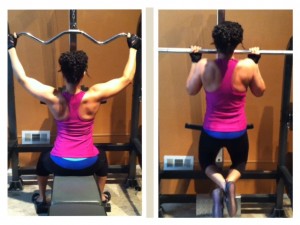
Total Body Supersets Workout Plan
When pressed for time, supersets can be a godsend.
Supersets consist of doing two exercises back to back with no rest in between. You can do exercises for either the same or different muscle groups. For example, you can use the rope attachment on a cable machine and do overhead tricep extensions, one set, and then move the rope down a little and do regular tricep extensions, one set, and repeat. Minimizing time between sets not only does the obvious- saves time- but it really adds a burn to the muscles, as it works muscle fibers differently than normal-set weight training.
Tri-sets (three exercises done back to back), and giant sets (four or more exercises done in a row) also fit into this category. With all supersets, you perform the entire set of two or more exercises, then rest as instructed in your program. If no rest period is indicated, typically 30 seconds is appropriate.
Word of caution for the ladies. Many ladies who are drawn to more endurance style workouts will enjoy supersets because they will feel like they are truly “working” – but I would be cautious of falling into the superset trap of thinking that every thing is better when superset. Sometimes longer rests are called for, and necessary, even in shorter workouts – depending on the phase. So if you are always short on time in the gym, be sure to switch up the types of supersets you do (one month superset the same muscle group, the next month group opposing parts, etc), when the supersets are performed in the workout (on every set one month, on every other set the next, etc), and from time to time put supersets aside altogether for an entire phase or two.
Do High Intensity Interval Training
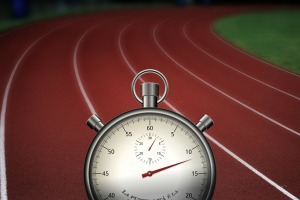 HIIT is praised mostly for two reasons – one, it is a huge time saver and two – the intensity level leads to quicker results than regular cardio and puts your body in a calorie burning state for hours after. Imagine swapping that twenty minute trek on the dreadmill with a quick eight minute sprint session. Suddenly, you’ve gained twelve minutes that you can use to do strength training, ab exercises, stretching, etc. This means that if you were used to splitting up your strength and cardio work to two separate workouts of an hour or so, you can now condense them both into ONE workout that is an hour or less.
HIIT is praised mostly for two reasons – one, it is a huge time saver and two – the intensity level leads to quicker results than regular cardio and puts your body in a calorie burning state for hours after. Imagine swapping that twenty minute trek on the dreadmill with a quick eight minute sprint session. Suddenly, you’ve gained twelve minutes that you can use to do strength training, ab exercises, stretching, etc. This means that if you were used to splitting up your strength and cardio work to two separate workouts of an hour or so, you can now condense them both into ONE workout that is an hour or less.
Try adding true HIIT or Tabata finishers to your strength workouts, rather than dedicating an entire day to each. What do I mean by “true?” Well, because HIIT has become all the rage, we are now bombarded with HIIT workouts popping up left and right ranging anywhere from 10-60 minutes. While they may all be hard in their own right, true HIIT brings the intensity like no other. Intensity meaning that if you can do any interval for longer than 30ish seconds, or any workout lasting longer than 20ish minutes (not including any warmup/cooldown)…it’s not hard enough. You need super intense intervals where you are going at a crazy, all-out (RPE 10+) effort for 20-30 seconds (and absolutely can’t go longer even if you wanted), and then resting for another 20-30 before repeating. This type of training is short and to the point, making it perfect to tack on to the end of you workout.
A couple words of warning with HIIT. 1) It’s not for everyone, allow yourself to work up to it if you’re newer to working out (perhaps with one of the HIIT-like workouts with longer duration or intervals mentioned above). 2) If a 20 minute HIIT workout early in the AM leaves you worn out and more sedentary than usual for the rest of the day – you are negating the benefits of the afterburn. You may want to stick to 30-40 min of a different cardio activity that will still allow you to get in normal amounts of daily activity/productivity every day.
Stay Focused
 Above all, the most important way to maximize your workout is to have laser beam focus. Don’t stress over having to shorten your gym time for a season. Be fully present, engaged in the workout, giving it your all, and knowing that it’s enough. If you head into a workout feeling obligated, and like you just have to get it done to get it out of the way, you won’t be as efficient as possible. If you practice negative self-talk and feel that working out serves as a form of punishment for bad food choices, you’ll have a hard time finding yourself getting in a good sweat (or being satisfied with a less sweaty workout). Remembering why you choose to be active is important, encouraging part of your journey. While physical benefits (toned muscles, smaller waistlines) are a nice perk of working out, living a healthier and happier life far surpass them all.
Above all, the most important way to maximize your workout is to have laser beam focus. Don’t stress over having to shorten your gym time for a season. Be fully present, engaged in the workout, giving it your all, and knowing that it’s enough. If you head into a workout feeling obligated, and like you just have to get it done to get it out of the way, you won’t be as efficient as possible. If you practice negative self-talk and feel that working out serves as a form of punishment for bad food choices, you’ll have a hard time finding yourself getting in a good sweat (or being satisfied with a less sweaty workout). Remembering why you choose to be active is important, encouraging part of your journey. While physical benefits (toned muscles, smaller waistlines) are a nice perk of working out, living a healthier and happier life far surpass them all.
Photo Cred: Danilo Rizzuti
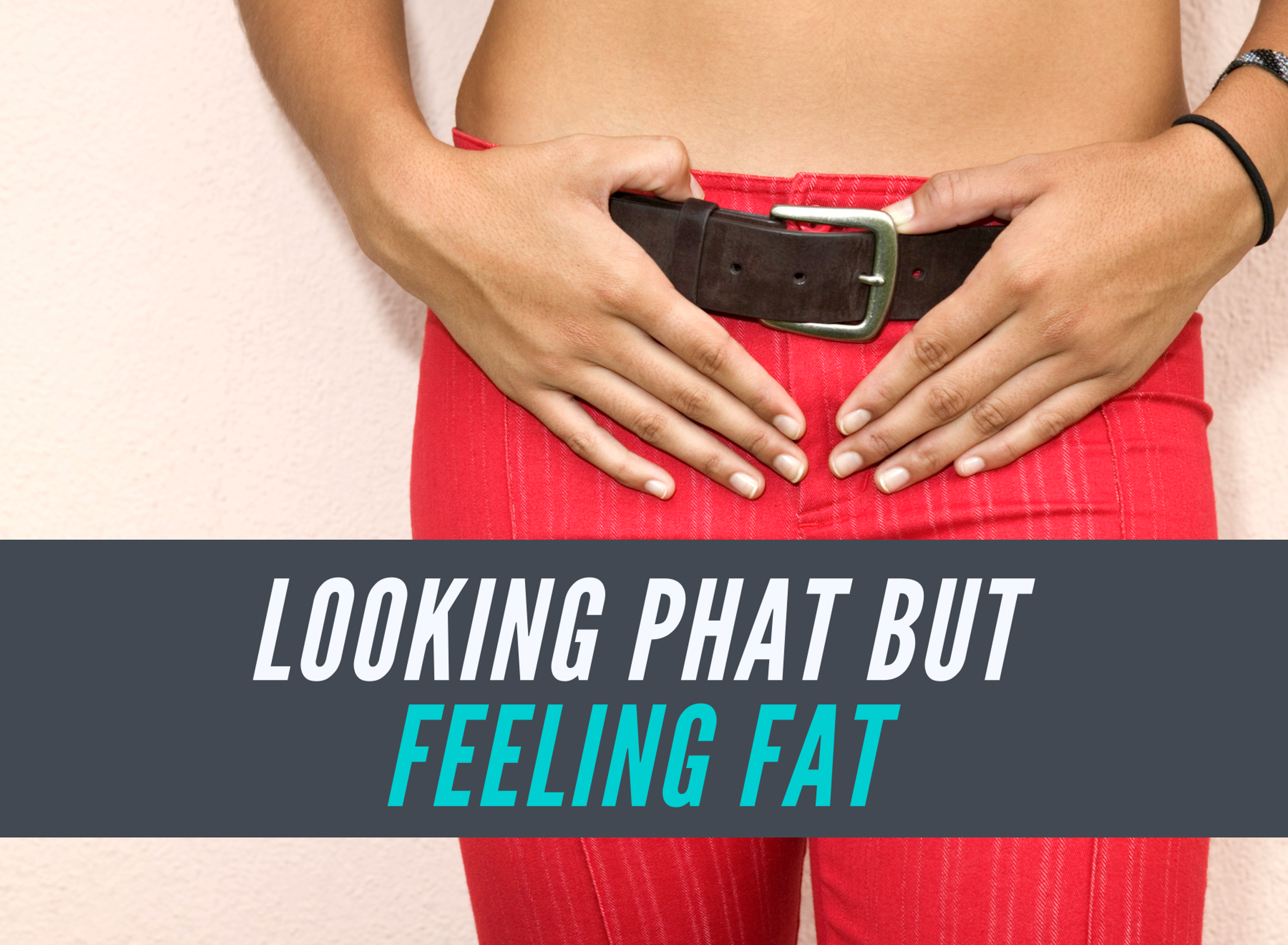
by EM2WL | Sep 24, 2014 | Building Muscle, Fat Loss / Cutting, Motivation
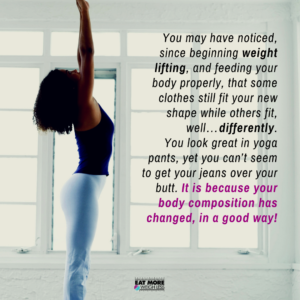 You may have noticed, since beginning weight lifting, and feeding your body properly, that some clothes still fit your new shape while others fit, well…differently. You look great in yoga pants, yet you can’t seem to get your jeans over your butt. You look great naked, but when you put on those shorts your thighs look like… “quadzilla??” Perhaps you weigh the same as you did before, or maybe you’ve gained a few extra pounds. A quick measurement check reveals that though you have lost inches in some areas, you’ve actually gained inches in others.
You may have noticed, since beginning weight lifting, and feeding your body properly, that some clothes still fit your new shape while others fit, well…differently. You look great in yoga pants, yet you can’t seem to get your jeans over your butt. You look great naked, but when you put on those shorts your thighs look like… “quadzilla??” Perhaps you weigh the same as you did before, or maybe you’ve gained a few extra pounds. A quick measurement check reveals that though you have lost inches in some areas, you’ve actually gained inches in others.
Is this supposed to be happening?
The answer is: Yes. It is because your body composition has changed, in a good way! Body composition is the proportion of fat, muscle and bone that make up the body. It is measured by the percentage of body fat and the percentage of lean body mass that you have. Resistance training along with an appropriate calorie intake, and proper macronutrients is the foundation of these amazing changes.
When I decided to make fat loss my ultimate goal — by adding resistance training to my workouts — I assumed that meant I would automatically fit into a smaller size. I slowly saw the changes to my body in the mirror and I loved what I was beginning to see. I embraced the slimming in some areas and the new curves in others. But when I went shopping for new pants, I would get discouraged. The sizes and styles that I tried on, thinking they should fit…didn’t. The smaller sizes were a little too tight in the hips, the larger sizes were too big in the waist! When I tried on shirts, some were tight around the biceps while others were tight across the back and chest.
But I didn’t give up.
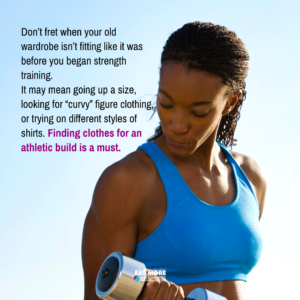 As I continued to try on different styles, sizes, and designers, I finally found a rack of designer pants that made classic, straight, and curvy fit. Yay! I chose one of each cut, in 2 different sizes. The curvy pant was made just for me. I turned from side to side admiring how awesome I looked and felt. But soon reality hit…
As I continued to try on different styles, sizes, and designers, I finally found a rack of designer pants that made classic, straight, and curvy fit. Yay! I chose one of each cut, in 2 different sizes. The curvy pant was made just for me. I turned from side to side admiring how awesome I looked and felt. But soon reality hit…
It was one size larger than what I thought I should be in. I found myself depressed over a number some guy put on a label inside a pair of pants. Shame on me!! I loved the way I looked and felt. I decided that it was time for me to ditch the number on the label in my pants like I did the scale!
So don’t fret when your old wardrobe isn’t fitting like it was before you began strength training. Look for a designer that makes clothes for your female figure. We really need to stop buying clothes made by designers who think women are shaped like 12-year-old boys. It may mean going up a size, looking for “curvy” figure clothing like I did, or trying on different styles of shirts, but finding clothes for an athletic build is a must.
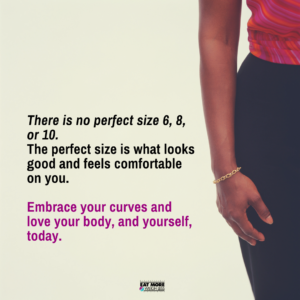 If you have been in the department stores lately you will also see beautiful long skirts and palazzo pants in gorgeous fall solid colors and prints that are perfect for figures between sizes. Many of these have elastic waistbands that will fit as you continue to lose fat, so you won’t have to buy smaller sizes! It’s important to choose clothing that not only looks fashionable, but also feels comfortable!
If you have been in the department stores lately you will also see beautiful long skirts and palazzo pants in gorgeous fall solid colors and prints that are perfect for figures between sizes. Many of these have elastic waistbands that will fit as you continue to lose fat, so you won’t have to buy smaller sizes! It’s important to choose clothing that not only looks fashionable, but also feels comfortable!
Remember, there is no perfect size 6, 8, or 10. The perfect size is what looks good and feels comfortable on you.
Embrace your new curves and love your body, and yourself, today.
Plugin by Social Author Bio


















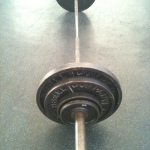

 You may have noticed, since beginning weight lifting, and feeding your body properly, that some clothes still fit your new shape while others fit, well…differently. You look great in yoga pants, yet you can’t seem to get your jeans over your butt. You look great naked, but when you put on those shorts your thighs look like… “quadzilla??” Perhaps you weigh the same as you did before, or maybe you’ve gained a few extra pounds. A quick measurement check reveals that though you have lost inches in some areas, you’ve actually gained inches in others.
You may have noticed, since beginning weight lifting, and feeding your body properly, that some clothes still fit your new shape while others fit, well…differently. You look great in yoga pants, yet you can’t seem to get your jeans over your butt. You look great naked, but when you put on those shorts your thighs look like… “quadzilla??” Perhaps you weigh the same as you did before, or maybe you’ve gained a few extra pounds. A quick measurement check reveals that though you have lost inches in some areas, you’ve actually gained inches in others. As I continued to try on different styles, sizes, and designers, I finally found a rack of designer pants that made classic, straight, and curvy fit. Yay! I chose one of each cut, in 2 different sizes. The curvy pant was made just for me. I turned from side to side admiring how awesome I looked and felt. But soon reality hit…
As I continued to try on different styles, sizes, and designers, I finally found a rack of designer pants that made classic, straight, and curvy fit. Yay! I chose one of each cut, in 2 different sizes. The curvy pant was made just for me. I turned from side to side admiring how awesome I looked and felt. But soon reality hit… If you have been in the department stores lately you will also see beautiful long skirts and palazzo pants in gorgeous fall solid colors and prints that are perfect for figures between sizes. Many of these have elastic waistbands that will fit as you continue to lose fat, so you won’t have to buy smaller sizes! It’s important to choose clothing that not only looks fashionable, but also feels comfortable!
If you have been in the department stores lately you will also see beautiful long skirts and palazzo pants in gorgeous fall solid colors and prints that are perfect for figures between sizes. Many of these have elastic waistbands that will fit as you continue to lose fat, so you won’t have to buy smaller sizes! It’s important to choose clothing that not only looks fashionable, but also feels comfortable!
Recent Comments